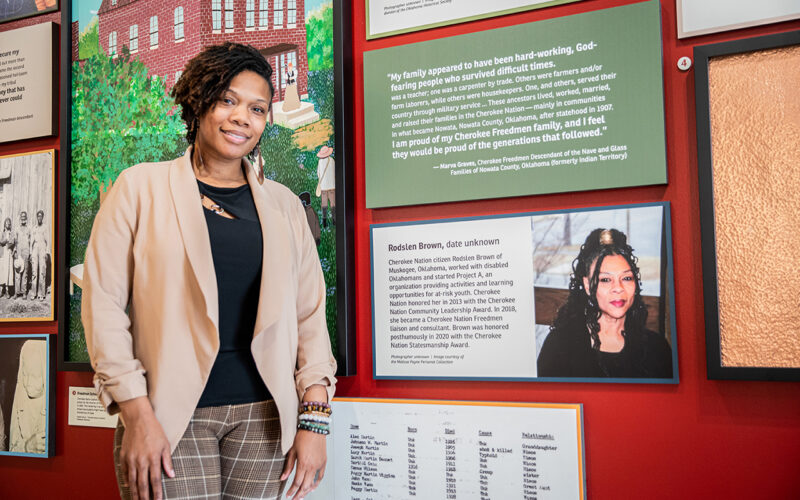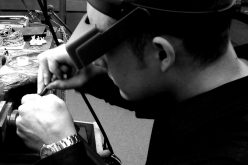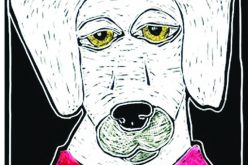BECCA MARTIN-BROWN
bmartin@nwaonline.com
Melissa Payne has always known she was “Indian” — her choice of descriptor — and that her ancestors came to Oklahoma on the Trail of Tears.
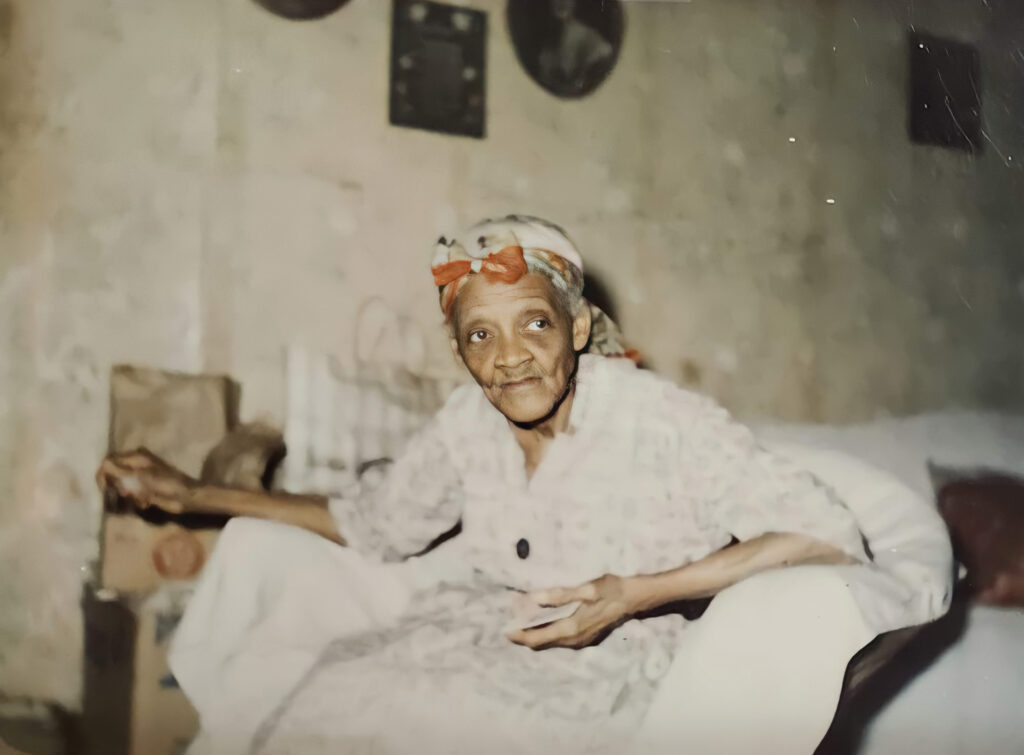
(Special to NWA Democrat-Gazette/Courtesy of Johnnilyn Kutten)
Where her lineage gets more complicated is that her ancestors were also African-Americans, enslaved by the Cherokee in their homelands of the Appalachian Mountains and forced to join them on the deadly trek to Oklahoma Territory in 1831.
“When they arrived in present-day Oklahoma, they worked the plantations and were the laborers building up the communities, homes, etc.,” says Payne, who is a liaison between the Freedmen community and the Cherokee Nation. “They were still enslaved.”
Slavery was finally abolished in the Cherokee Nation in 1863, and the Treaty of 1866 granted those freed slaves and their descendants “all the rights of native Cherokees” — until the governing body of the tribe changed its mind.
Payne, who grew up in Fort Gibson, Okla., doesn’t know a lot about her ancestors. She was told both sides of her family had Cherokee heritage, and she watched her mother, Rodslen Brown, apply for and receive citizenship in the Cherokee Nation. Then it was stripped away.
In 1983, the Cherokee Nation revoked Freedmen citizenship, and in 2007, their constitution was amended to give citizenship to only those with “Indian blood.” It wasn’t until 2017 that a federal court and the Cherokee Nation Supreme Court declared that descendants of Freedmen are full Cherokee citizens under the law.

Now, says Payne, “we honor our ancestors and remember their sacrifices through our citizenship.” Among those efforts to share the Freedmen stories is “We Are Cherokee: Cherokee Freedmen and the Right to Citizenship,” on exhibit through Jan. 19, 2025, at the U.S. Marshals Museum in Fort Smith.
“The exhibit shares the history of the Freedmen and their descendants and how our voices were not heard,” says Payne. “For those who were not aware of the history, they now have the opportunity to learn about it and develop a better understanding of why this recognition matters so much. We are Cherokee, and I hope that this exhibit will touch the hearts of others, and that through this sharing, we are all able to heal and embrace one another.”
It was Cherokee Nation Principal Chief Chuck Hoskin Jr. who decided to create a national focus on the Freedmen, announcing in 2020 the Cherokee Freedmen Art and History Project.
“Every nation gains strength from embracing its entire narrative – triumphs, tragedies and difficult chapters. Cherokee history is no different,” says Hoskin, who was elected in 2023 to his second and final four-year term as principal chief.
“This historic exhibition, which is traveling for the first time beyond Oklahoma, tells the remarkable resilience of Cherokee Freedmen amid generations of adversity,” he adds. “That spirit is a bond that unites us as Cherokees today.”
“The exhibit looks at the history of slavery in the Cherokee Nation told through narrative and historical photos of Indian Territory,” says Karen Shade-Lanier, exhibits manager for Cherokee Nation Cultural Tourism. “Most impactfully, this is also told through the personal histories of Cherokee Nation citizens of Freedmen descent. Through a call for submissions, they shared their family photos, historical documents — such as Dawes Roll testimony — thoughts on their ancestors, and finally attaining their tribal citizenship.
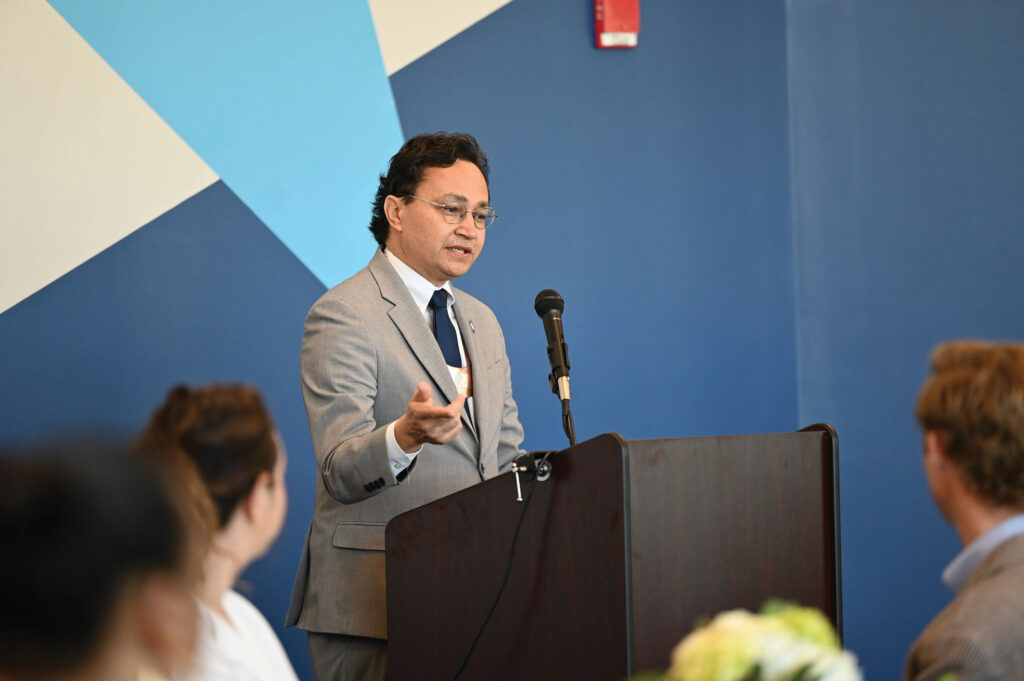
(Courtesy Photo)
“These are accompanied by original artwork focused on the Freedmen experience and rendered by Cherokee artists,” she adds.
Payne’s mother — whom she describes repeatedly as a “strong leader” — embraced her Indigenous heritage from “the moment she realized she was Cherokee,” she says.
“She wanted to know more about the culture of the Nation, as we all should,” Payne says. “She learned basket weaving. She started a nonprofit trying to teach kids the Cherokee language and more about their culture, their heritage. My mother was a phenomenal woman, applying all of the different things she could learn from the culture so we could honor our ancestors.”
As principal chief, Hoskin governs more than 460,000 citizens of the Cherokee Nation, including 15,000 of Freedmen descent. He says while the oppression of the Cherokee after European contact is well known, examining the history of those subjugated by the tribe “is something we ought to do and try to do in an unvarnished manner.”
For the Cherokee, he says, the “We Are Cherokee: Cherokee Freedmen and the Right to Citizenship” exhibit “creates a space to reaffirm complete equality and celebrate it.” Plus, he says, it has a positive impact on the “larger society.”
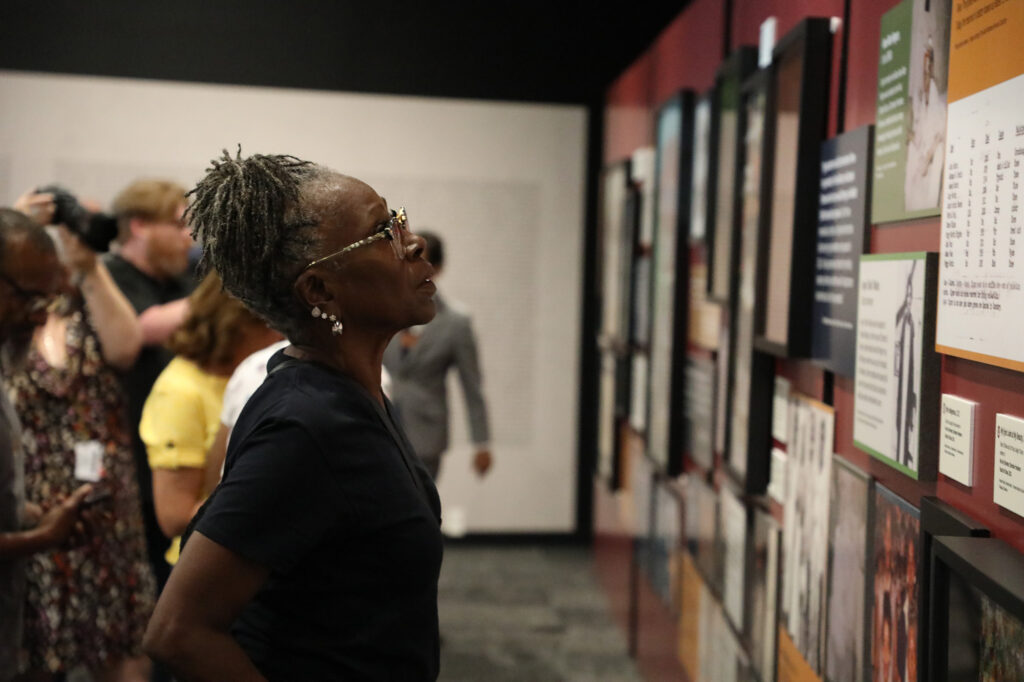
“I do have concerns that there are efforts to whitewash history, to push out chapters of history from public education, and I think we’re trying to lead by example,” he says. “We could easily as the Cherokee Nation bury our heads in the sand, and ignore the fact that for more than a century after Cherokee slave emancipation, we resisted even complying with our own promise to make them equal citizens.
“I hope [our transparency] tells the country there is nothing to be afraid of in talking about these dark chapters,” Hoskin adds. “I feel like the Cherokee Nation is stronger since we’ve been doing this. If the [United States] did this more, and made sure public education was a safe place for learning, we’d be better off as a country. I hope this effort has that sort of impact on the rest of society.”
Melissa Payne has a very simple message she hopes the exhibit conveys.
“We have the right to be Cherokee,” she says. “We ARE Cherokee.”
__
FAQ
‘We Are Cherokee: Cherokee Freedmen and the Right to Citizenship’
WHEN — Through Jan. 19, 2025; hours are 9 a.m.-5 p.m. daily
WHERE — U.S. Marshals Museum, 789 Riverfront Drive in Fort Smith
COST — $8-$15
INFO — marshalsmuseum.org
__
Listen Here!
Know The News
Chuck Hoskin Jr., principal chief of the Cherokee Nation, was a guest on last week’s Know the News podcast. Hear it at nwaonline.com/621knowthenews/.
__
FYI
Timeline
2020 — Cherokee Nation announces new plan to explore the history of Cherokee Freedmen.
Cherokee Nation Principal Chief Chuck Hoskin Jr. announces the Cherokee Freedmen Art and History Project. The project includes comprehensive research for historical materials, references, documents and images, as well as an assessment of current interpretations at all tribal sites. Cherokee Nation then utilizes the assessment to identify gaps in its representation and storytelling and develops new content that shares the Freedmen perspective throughout tribal history.
2021 — The tribe expands on its commitment to providing a better understanding of Cherokee Freedmen history by seeking community input that shares that story. The content gathered here would then be used in the creation of the exhibit.
2022 — Cherokee Freedmen story unfolds in new exhibit at Cherokee National History Museum. The “We Are Cherokee: Cherokee Freedmen and the Right to Citizenship” exhibit is shared for the first time at the Cherokee National History Museum in Tahlequah, Okla.
2023 — Cherokee Freedmen voice amplified in Tulsa exhibit as tribe continues on path towards reconciliation. Cherokee Nation partners with the University of Tulsa’s Oklahoma Center for the Humanities to further share the story of the Cherokee Freedmen and explore the tribe’s history with Black slavery.
2024 — Chief Hoskin expands Executive Order on Equality, ensures Freedmen citizens have equal access to tribal programs, creating the Principal Chief’s Task Force on Access to Programs and Services by Cherokee Citizens of Freedmen Descent.
2024 — “We Are Cherokee: Cherokee Freedmen and the Right to Citizenship” is seen for the first time outside Oklahoma at the U.S. Marshals Museum in Fort Smith.
— Courtesy of Cherokee Nation

